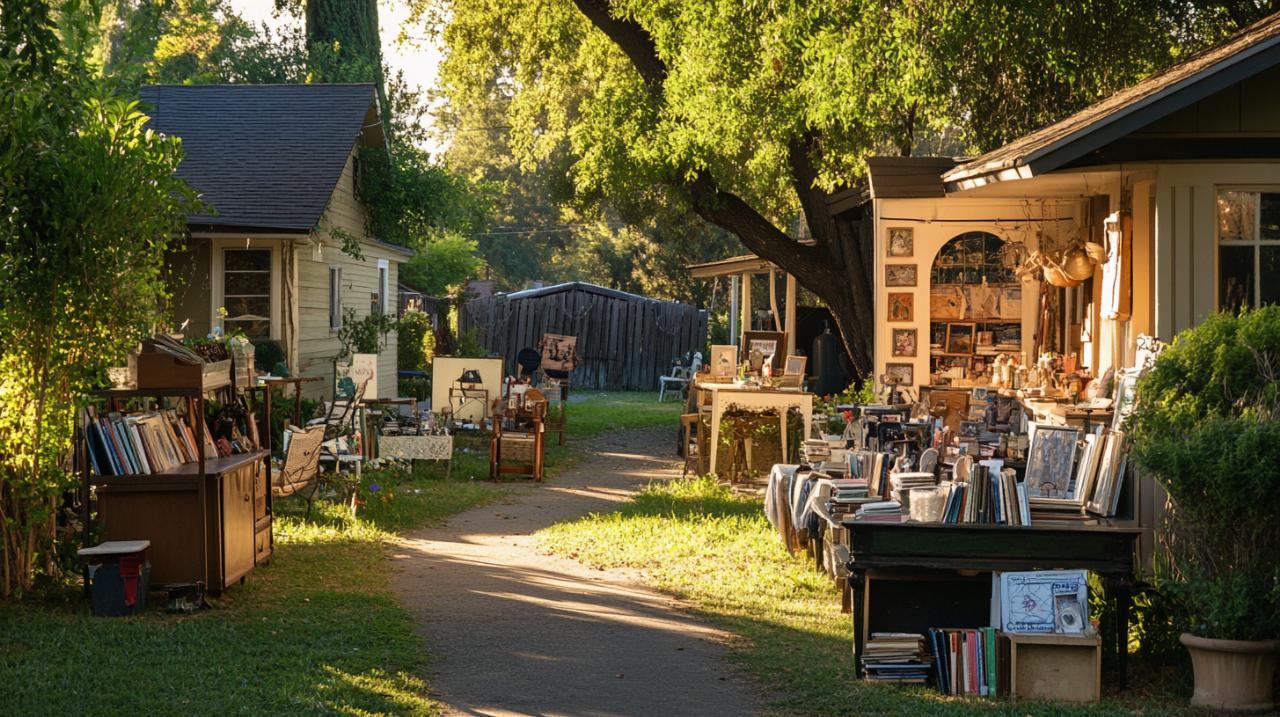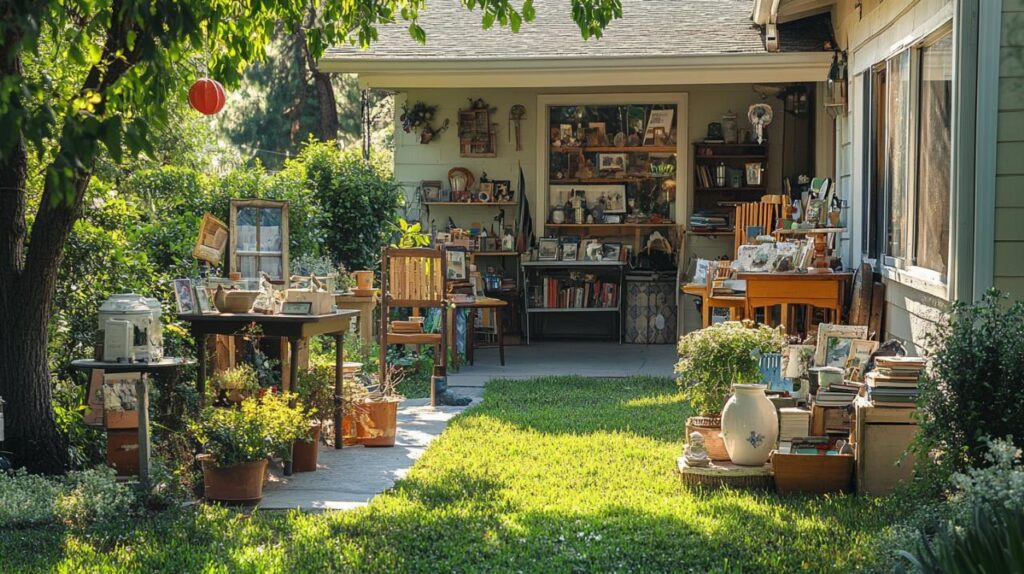Transforming a cluttered garage or spare room into a bustling marketplace might seem daunting, but with the right approach, you can turn unwanted items into extra cash whilst doing your bit for sustainability. Whether you call it a garage sale, a yard sale, or a car boot sale, the principles remain the same: careful planning, smart pricing, and a welcoming atmosphere can make all the difference. The secret to success lies in understanding your customers, presenting your goods attractively, and being ready to engage in a bit of friendly bartering along the way.
Preparing your items for sale
Sorting through your belongings
The first step in creating a successful event is to have a thorough sort-out of everything you no longer need but that might still hold value for someone else. Quality is absolutely crucial in this process, as buyers are looking for items that are in good working order and still have plenty of life left in them. Walk through each room of your home and create a detailed list of potential sale items, from clothing and books to gadgets and kitchen equipment. This inventory not only helps you see what you have to offer but also makes it easier to organize your stall on the day itself. Consider the season and the likely demographics of your customers when deciding what to include, as toys and garden furniture might be more appealing in the warmer months whilst cosy blankets and winter gear could attract buyers in autumn.
Pricing your items clearly
Once you have gathered your belongings, the next challenge is to set prices that are fair yet profitable. A good rule of thumb is that second-hand goods typically sell for between ten and thirty percent of their original value, depending on their condition and popularity. Do some research by visiting local charity shops, browsing online marketplaces, and checking what similar items are fetching at other car boot sales. Clear and transparent pricing builds trust with your customers and speeds up transactions, so consider using round numbers to simplify cash exchanges. Offering deals such as buy-one-get-one-free or discounts for purchasing multiple items can encourage buyers to spend more, whilst bundling related products together creates added appeal. Be prepared to haggle, especially as the day wears on, but always know your bottom line to avoid underselling valuable pieces.
Marketing your garage sale
Creating eye-catching posters
Even the best-stocked sale will struggle without effective promotion, and eye-catching posters are an essential tool for drawing in local traffic. Design bold, colourful signs that include the date, time, and address of your sale, along with a few highlights such as large furniture or unique collectables. Place these posters at key junctions and busy streets in both directions of traffic flow, using arrows to guide potential customers directly to your door. Wooden arrow signs can be particularly effective, as they stand out and are easy to follow. Make sure your signage is clear and readable from a distance, and consider putting them up the evening before to catch the attention of morning commuters and early risers.
Promoting online and locally
In addition to traditional posters, harnessing the power of online platforms can significantly boost attendance at your event. Share details of your sale on local Facebook groups, Craigslist, and community forums, providing a detailed list of items along with photographs to pique interest. Word-of-mouth remains a powerful and cost-free method of advertising, so tell your neighbours, friends, and colleagues about your plans. If possible, collaborate with nearby residents to create a clustered sale or even an annual neighbourhood event, as this can draw in far more punters than a single household effort. Updating your online adverts the day before ensures that all information is current and that any last-minute additions are included.
Setting up your sale space
Arranging items for easy browsing
The layout of your sale space plays a crucial role in attracting and retaining customers, so choose a roomy, well-lit area that is easily accessible from the street. Group similar items together, such as clothing, books, gadgets, and household goods, to help buyers navigate your offerings with ease. Use tables and shelves to display your wares in an organized and professional manner, and consider hanging garments on a rack to make them more visible and appealing. Place your most eye-catching or valuable items towards the front to draw people in, whilst keeping larger furniture near the garage or entrance to serve as anchor pieces. Creating a logical floor plan that allows for smooth foot traffic will encourage customers to browse longer and buy more.
Ensuring accessibility for customers
Accessibility is key to a successful sale, so ensure that your space is inviting and easy to move around. Clear signs with prices or categories help shoppers find exactly what they are looking for without needing to ask repeatedly, and having bags and wrapping materials on hand makes the purchasing process more convenient. If you plan to organize a successful garage sale, consider setting up a small refreshment station with drinks or snacks, as this not only keeps customers happy but also encourages them to linger and explore your offerings. Background music can create a pleasant atmosphere, and decorations such as balloons or bunting add a festive touch that makes your sale stand out from others in the area.
Managing transactions during the sale

Preparing cash and card payment options
Having the right change ready is essential for smooth transactions, so visit your bank in advance to obtain a mixture of coins and small notes. A typical setup might include around twenty pounds in pound coins, sixty pounds in five-pound notes, and additional smaller denominations to cover a range of purchases. Whilst cash remains the most common payment method, offering card payments or bank transfers can accommodate customers who prefer not to carry large amounts of money. Keep your takings secure in a bumbag or cross-body bag to prevent theft, and only handle one transaction at a time to avoid confusion or mistakes. Recording each sale in a notepad helps you track your earnings and identify which items are proving most popular.
Mastering the Art of Haggling
Haggling is an integral part of the car boot sale experience, and being prepared to negotiate can help you move stock whilst still making a profit. Price your items with some room for bargaining, and be ready to meet customers halfway or suggest a discount if they purchase multiple pieces. However, do not feel obligated to accept lowball offers that undervalue your goods. Instead, affirm the quality and usefulness of the item and suggest a fair compromise. Towards the end of the day, consider implementing time-based price drops to create a sense of urgency and encourage last-minute purchases. Building rapport with buyers and being friendly yet firm in your negotiations will enhance the overall experience for everyone involved.
Creating a welcoming atmosphere
Being approachable and friendly
A warm and welcoming demeanour can make all the difference in converting browsers into buyers, so greet each visitor with a smile and a friendly word. Being approachable encourages customers to ask questions and feel comfortable spending time at your stall, which in turn increases the likelihood of sales. Keep your space tidy and well-organized throughout the day, as a neat presentation reflects positively on the quality of your items. If you notice someone showing interest in a particular piece, offer helpful information about its origin or usage to add value and build trust.
Engaging with potential buyers
Engaging with your customers on a personal level can transform a simple transaction into a memorable experience. Share stories about where items came from or why they might be useful, and be attentive to what each individual is looking for. Encouraging repeat buyers by offering additional deals or discounts on subsequent purchases can help you shift more stock and build a loyal customer base. Enlisting the help of friends or family members allows you to serve more people efficiently and keep an eye on security, ensuring that nothing goes missing. A friendly atmosphere not only boosts sales but also fosters a sense of community and goodwill.
Post-sale considerations
Disposing of unsold items promptly
Once the sale has ended, it is important to deal with any remaining items quickly and responsibly. Sort your leftovers into piles for keeping, selling online, or donating to charity. Platforms such as eBay, Amazon, and ThredUp offer opportunities to sell clothing and other goods to a wider audience, whilst local charity shops and community centres are always grateful for quality donations. Anything that is beyond saving should be disposed of in an environmentally responsible manner, and the entire area should be given a thorough clean-up to restore it to its original state. Removing all posters and signage from the neighbourhood is a courteous final step that prevents confusion for future events.
Obtaining necessary council permissions in london
Before hosting your sale, it is essential to check with your local council to determine whether you need any permits or licenses, particularly if you plan to hold the event on public land or expect significant foot traffic. In London, regulations can vary by borough, so contact your local authority well in advance to ensure compliance with any requirements. Being proactive about securing the necessary permissions not only keeps you on the right side of the law but also demonstrates respect for your community and neighbours. Taking the time to review council guidelines and obtain the appropriate documentation ensures that your sale proceeds smoothly and without any unwelcome interruptions.
Reflecting on the day by analysing what sold well, which pricing strategies worked, and what could be improved for next time will help you refine your approach for future events. Reviewing your sales records and considering customer feedback provides valuable insights that can boost your success in subsequent sales. Hosting regular car boot sales can become a rewarding habit, offering not only financial benefits but also opportunities to build community spirit and promote sustainable shopping practices.

